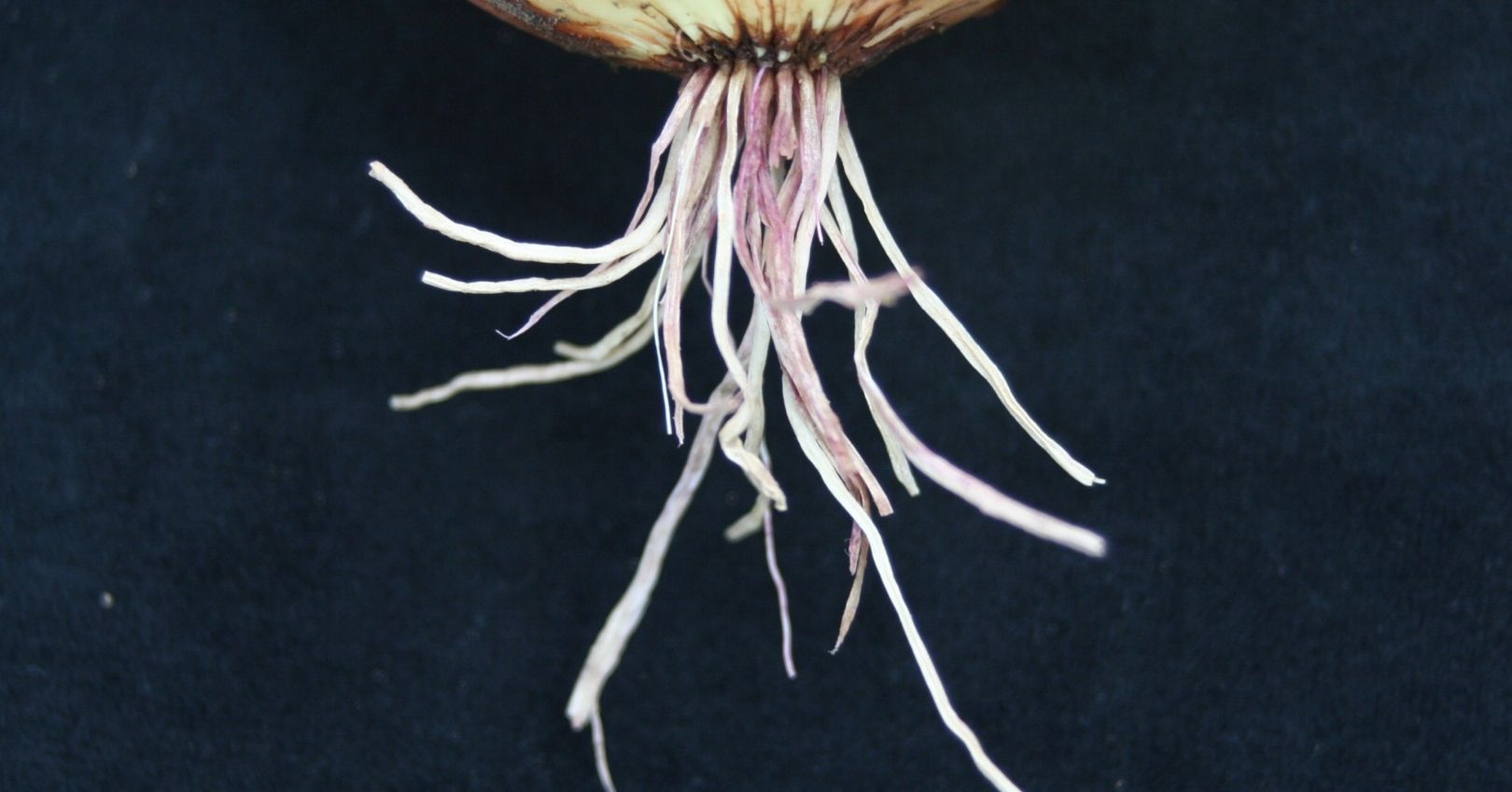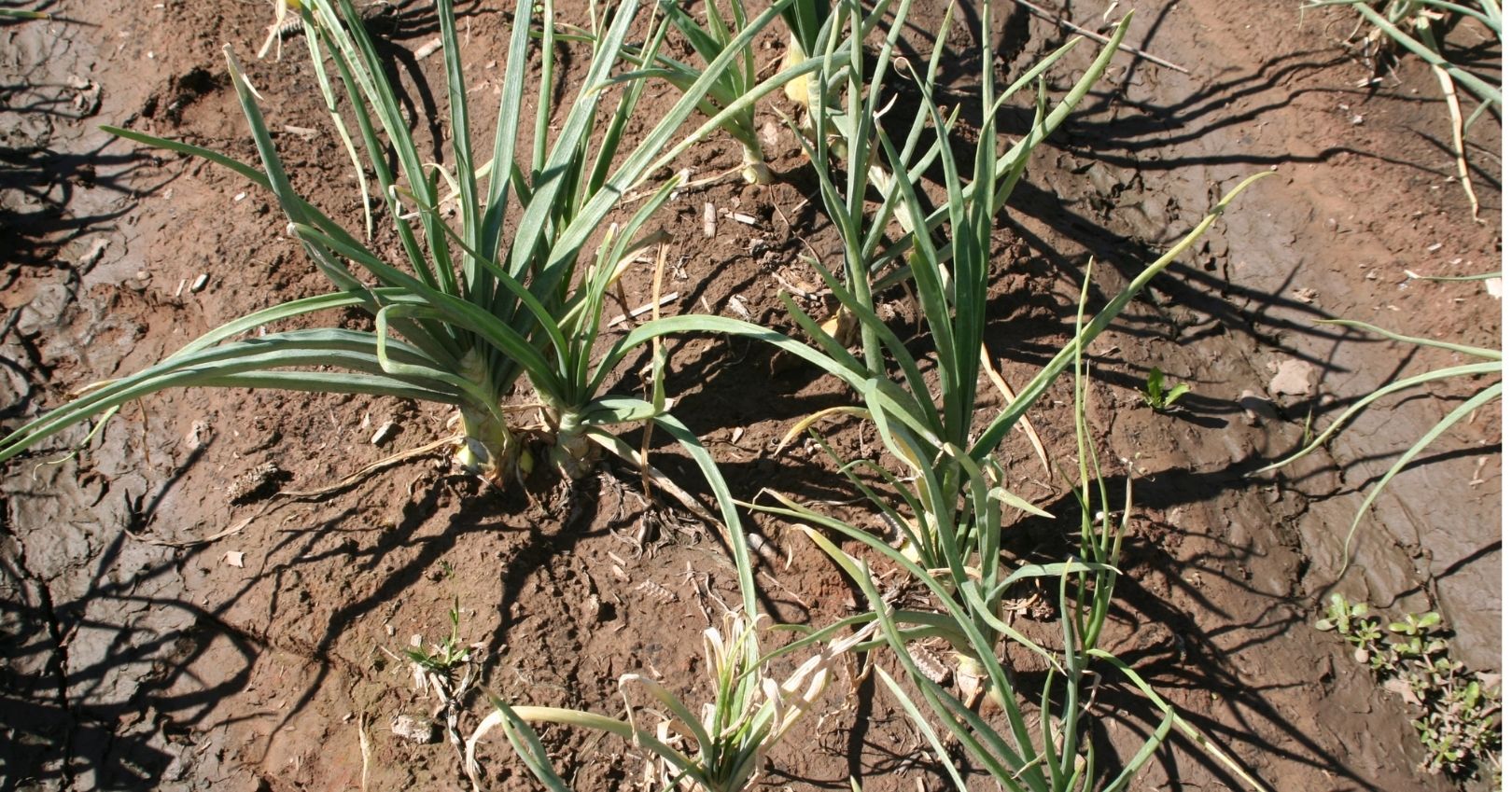Pink Root


Casual Agent
Pink root is a fungal disease caused by Phoma terrestris. The fungus is commonly found in soil and is a concern in onion growing areas in Utah.
Symptoms
The characteristic symptom of pink-colored roots gives the disease its name. The roots later turn dark red or purple, start to dry up, and eventually die. The fungus will spread to new roots, restricting the plant’s root system, which leads to reduced bulb size. Primarily, the above-ground symptom of pink root is stunting. In severe cases, foliage will die back resembling drought stress.
Disease Cycle
Phoma terrestris is most common in poorly drained soils that are low in organic matter. Unfavorable conditions (heat, cold, drought, flooding, nutrient deficiencies) weaken the roots and increase their susceptibility to the disease. To infect and colonize the roots, the fungus produces hyphae which penetrate young onion roots and grow around the cortical tissue. Optimum infection occurs at soil temperatures of 75-85°F. Visible symptoms on onions usually appear 7 to 21 days after infection has occurred. Open wounds are not necessary for infection, but weakened plants are more susceptible. P. terrestris is spread by transplanting onion seedlings, on garden tools, and in water.
Management
P. terrestris can survive in the soil for many years. While waiting for a suitable host, the fungus survives on roots of other plants without causing damage to them.
- Use resistant varieties.
- Maintain healthy, vigorous plants. Keep plants free from insects and other diseases.
- Use crop rotation. Inoculum in the soil builds up and increases disease severity if onions are grown in the same field for several years in a row.

